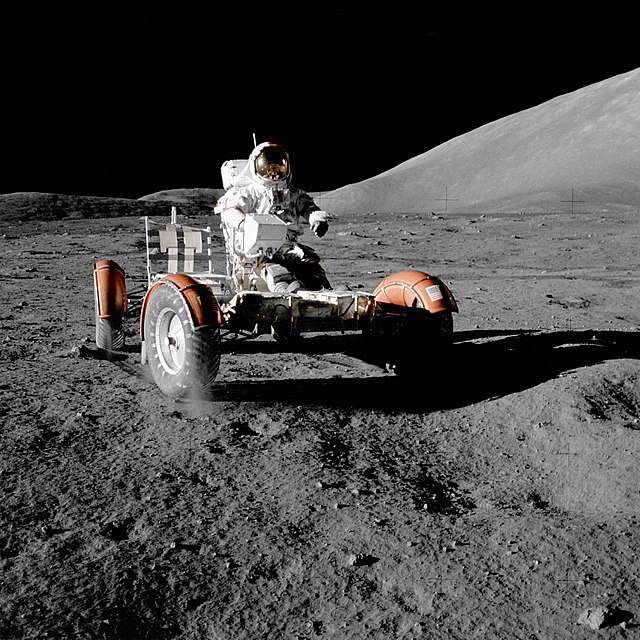NASA has opened its latest competition, calling on inventors of all stripes and from all companies to design the best vehicle to be driven on the moon. They are aiming for a cross between the the Apollo-era “moon buggy” driven on the lunar surface in the 1970s and the remote-controlled rovers currently working on the Martian surface.
The Washington Post writes, “Called the “Lunar Terrain Vehicle,” the rover would play a key role in NASA’s Artemis program, which seeks to create the infrastructure on and around the lunar surface that would allow for a long-term and sustainable human presence. To achieve that, the space agency is working to develop sources of power on the moon, as well as the technologies that would allow astronauts to “live off the land” by mining lunar resources and even using the lunar regolith, or lunar dust, to create building blocks that could be used to create habitats.
One of the companies aiming to be first in the LTV competition is a start-up called Venturi Astrolab, founded by Jaret Matthews, a former SpaceX and NASA Jet Propulsion Laboratory engineer.
This year, the company announced that it had signed a contract with SpaceX to deliver its land vehicle, the Flexible Logistics and Exploration Rover, or FLEX. Set to happen as early as mid-2026, the mission would be the first commercial foray for SpaceX’s Starship rocket, which NASA also intends to use to ferry its astronauts to and from the lunar surface for the first two landings under Artemis.
The rover is designed to be, as the name implies, flexible. Its modular design will allow it to swap out payloads and serve different missions over time, Matthews said. Venturi Astrolab said it has signed agreements for commercial payloads but did not provide details on them.”
Artemis II is expected to launch in November of 2024, carrying the first astronaut crew to visit the Moon since Apollo 17 in 1972. If the voyage is successful, Artemis III plans to land astronauts back on the lunar surface. In a statement, NASA stated that “Artemis astronauts will drive to explore and sample more of the lunar surface using the LTV than they could on foot. NASA will contract LTV as a service from industry rather than owning the rover. Contracting services from industry partners allows NASA to leverage commercial innovation and provide the best value to U.S. taxpayers while achieving its human spaceflight scientific and exploration goals.”
As America News Nation reported, the United States space agency has also outsourced rocket production for this mission.
Lara Kearney, manager of NASA’s Extravehicular Activity and Human Surface Mobility program at the agency’s Johnson Space Center in Houston, said, “We want to leverage industry’s knowledge and innovation, combined with NASA’s history of successfully operating rovers, to make the best possible surface rover for our astronaut crews and scientific researchers.”
There are certain to be many willing to take on the challenge.
{Read More: ‘Big Short’ Investor Has Some Scary Predictions]



